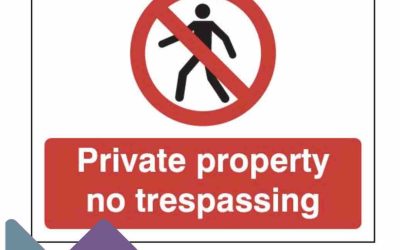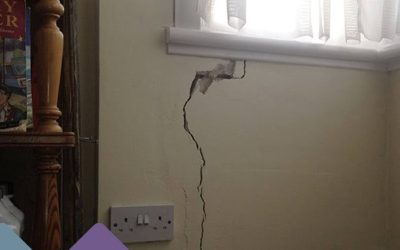Winter is an exciting time with Christmas fast approaching, ice skating, sledging, skiing, snowball fights, and other fun activities all become readily available. However, the winter weather can cause expensive and treacherous damage to your home, fortunately It is never too late to protect your home from the winter.
It is worth having a good look around your home every year from a point of view of that damage can be caused by storms, snow, ice/cold weather and rainfall.
There are various precautions that you can take with regards to the colder weather and here I have recommended a few.
Roofs and Rainwater goods (Gutters)
Direct Line Home Insurance statistics showed that, when temperatures plummeted and icy conditions struck, three million homeowners were victims of damaged properties due to the adverse weather.
The most common claims were for damage to the roof, which accounted for 35% of claims, closely followed by frozen or burst pipes with 31%.
To avoid frozen pipes this winter, keep the central heating at a minimum 12C-15C if it is forecast to freeze.
Pipes are most likely to burst in cold spells when homes are empty. If you go away, insulate pipes in the attic and crawl spaces as these exposed pipes are the most likely to freeze. If you are away for a long time over the winter, it may be also worth draining your cold-water system.
Slates or tiles that are broken or missing as a result of storm damage can result in water penetration, damp patches and wet rot to timbers where leaks have occurred over time. If there are only a few slipped or missing tiles/slates, they can be easily and in expensively re-fixed or replaced. However, if damage is extensive, or the coverings are obviously and extensively damaged, the whole roof may need re-covering which is costly.
Blocked gutters will often result in overflowing and possible damp issues. This is caused by fallen leaves in autumn and other organic debris, such as, moss growth, vegetation growth all dying in autumn/winter. Generally speaking, the rainwater goods and gullies should be cleaned after the leaves have fallen in the autumn. A wire or plastic balloon can be retrofitted into the outlets as a preventative measure.
Deterioration to Walls from Freezing Water
The most severe water damage is associated with freeze-thaw cycles. During cold weather, liquid water at or near the wall surface will not evaporate but will freeze. Freezing water will damage the brick or concrete since water expands during freezing.
A portion of the surface will be broken away (spalled) by the freezing action. When the outside surface is removed, the soft inner part of the brick will deteriorate quickly. Repeated freeze-thaw cycles increase the spalling.
Deterioration to Walls from Ground Water
Ensure that any damp-proof courses are not bridged externally by soil or by paving or ramp systems. The damp-proof course protects your home against rising damp so an action as simple as keeping the ground clear can go a long way to protect your property.
Deterioration to Walls from Wind-Driven Rain
The main source of masonry water intrusion is driving rains, and the level of penetration is affected by rain quantity and wind pressure. The directional consistency of wind-driven rains can create severe water damage to the affected side of an exposed masonry surface.
Once masonry walls are exposed to hours of driving rains, they usually reach a saturation point. Saturated walls will take from one to several days to lose most of this water. Trees, plants, and micro-organisms like algae can prevent it from drying. With cumulative cycles, a saturation point can be reached in masonry pores that often leads to leaks or damage to the wall system.
Protection is primarily by rain screen or cladding systems, which reduce the risk of moisture impacting upon the external face of the wall. Tile hanging and ship lapped weather boarding (timber siding) were traditionally used to protect the upper storeys of exposed elevations. However, with increased requirements for reduced heat loss, thermally insulated, proprietary, panel and render systems are increasingly available.
Problems Inside the Property
One of the main problems a home suffers in winter is damp and mould. Every family or occupant of the property produces moisture as part of everyday life from washing, cooking and even breathing! If moisture is unable to escape from your home, it will create damp on the cold surfaces of the home, such as your walls and ceilings, which can encourage mould growth.
Condensation occurs mostly during the winter months on the coldest areas of the structure. Condensation is a problem that occasionally causes considerable damage within buildings and is occurring frequently as homes are much more draught free.
Modern bathrooms/showers, kitchen facilities and the use of heating all create vapour etc., which increases the humidity within buildings. This creates beads of moisture on windows and walls causing unsightly mould growths (which as most vendors have prior knowledge of our inspection are easily washed off). Sensible heating/ventilation can control the problem. Domestic dehumidifiers are also now available but should not be essential.
Occasionally condensation occurs in the roof space causing rot and leading to structural failure of the roof. Efficient ventilation of such closed areas needs to be provided as buildings are insulated and upgraded.
Today’s Building Regulations require that mechanical ventilation routed externally (not to the loft) is provided to all kitchens and bathrooms to new buildings or conversions, along with trickle ventilators to windows, etc. It is sensible to provide these to older buildings too.
Insulation keeps internal walls at a temperature above the dew point of the air inside. Internal wall insulation is best when it is not an option to add insulation to the exterior of your property.
Even a well-maintained home can’t always avoid winter problems, if you have a problem call us for expert diagnosis and speak with one of our RICS surveyors.




